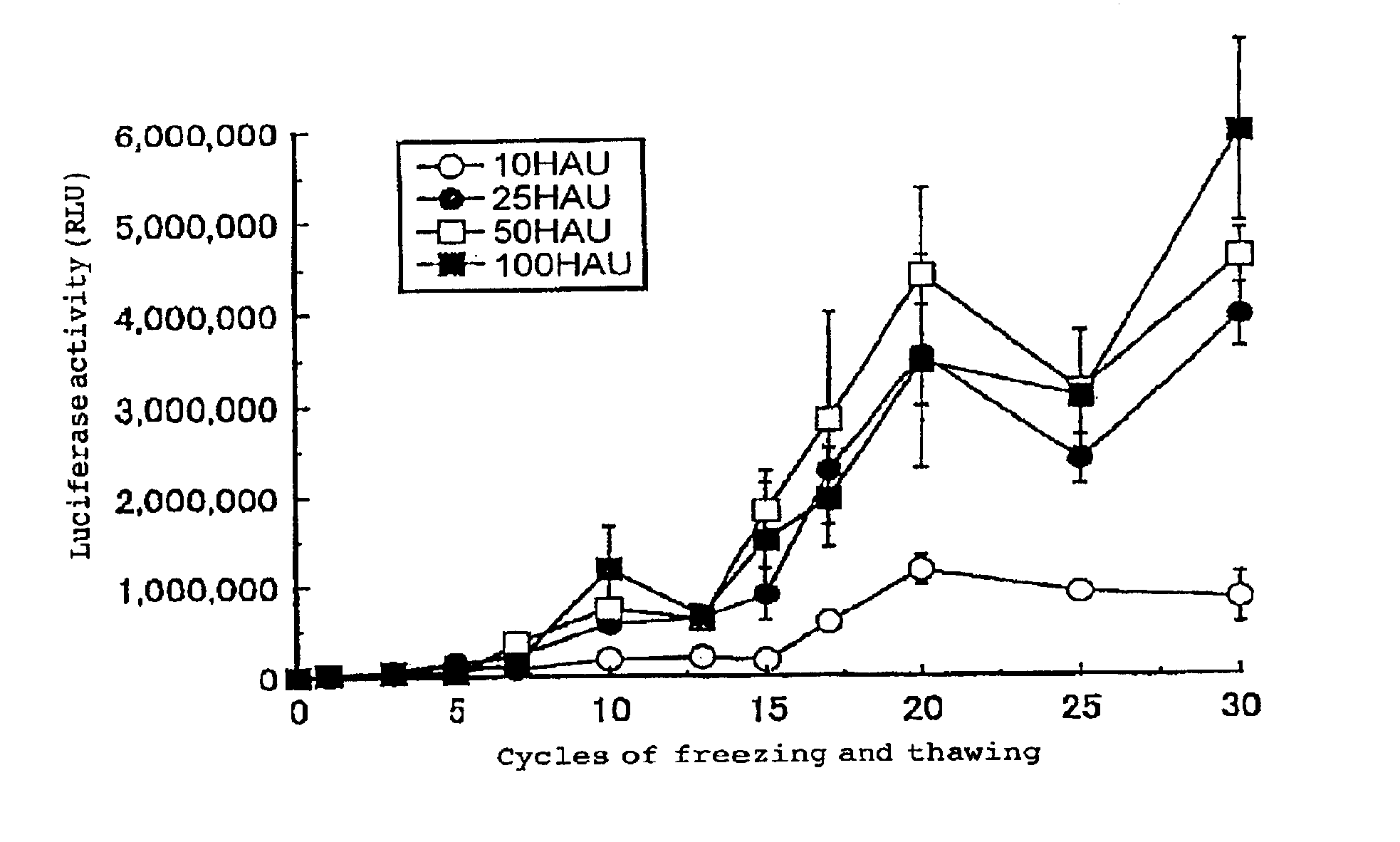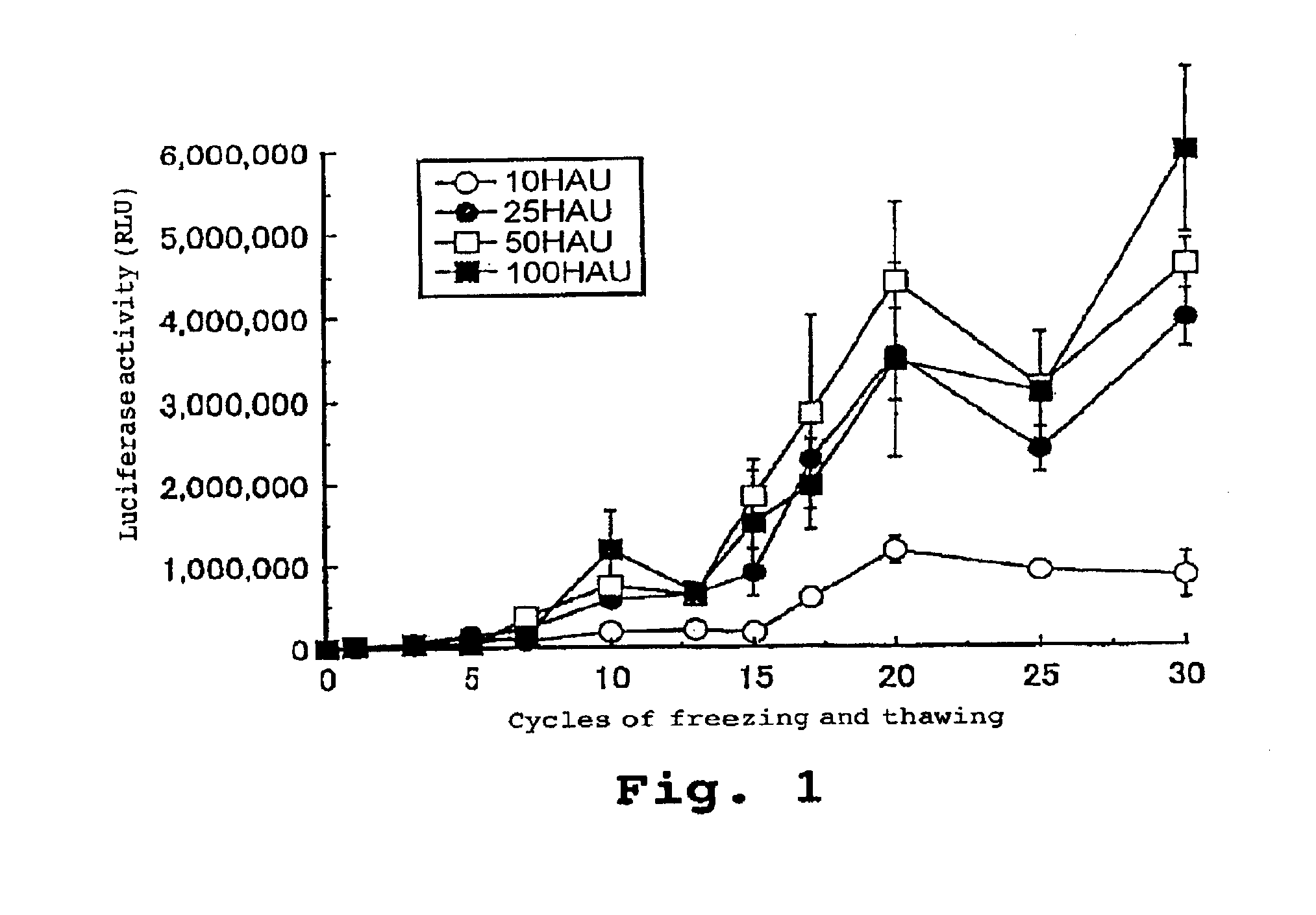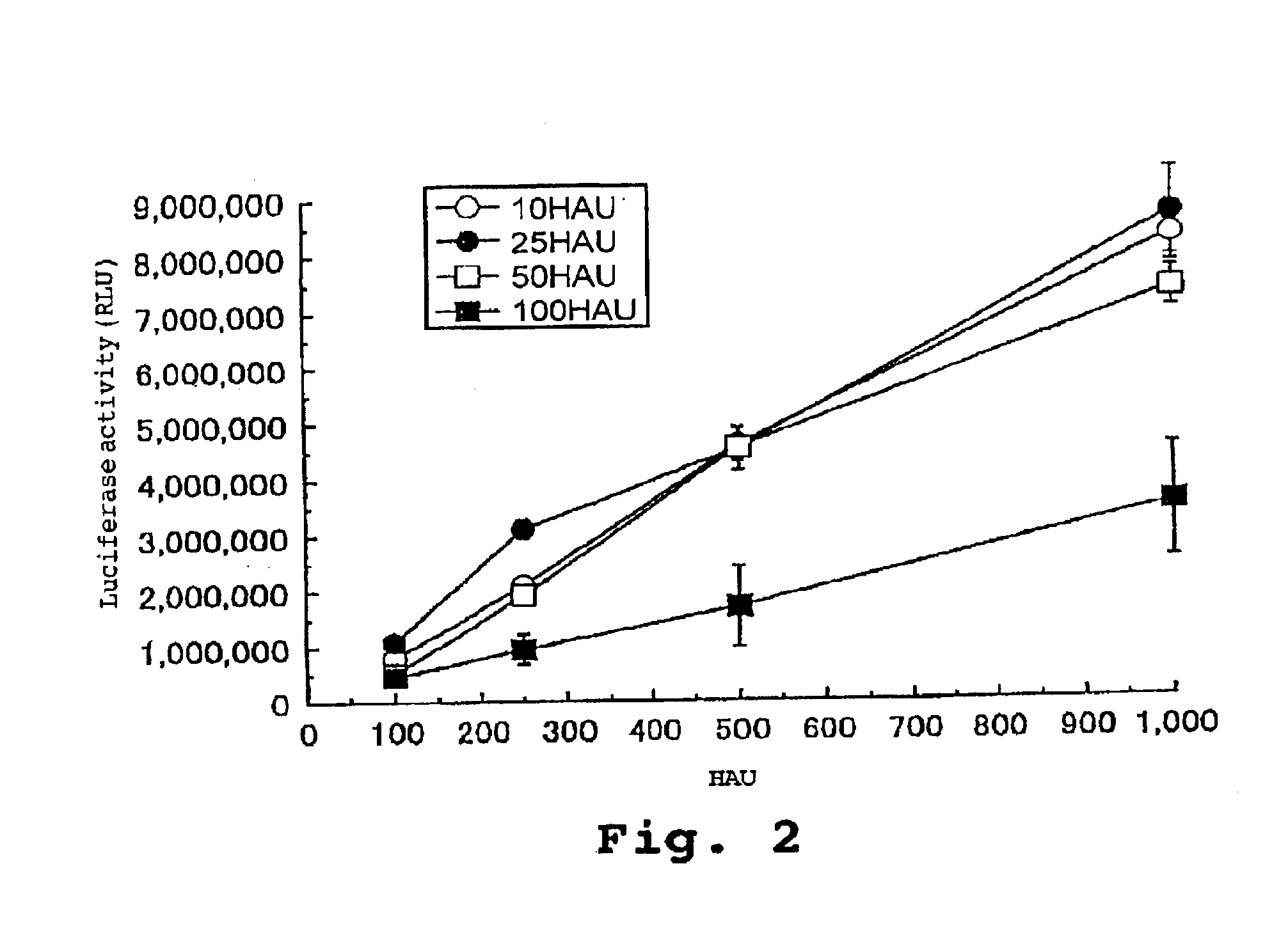Virus envelope vector for gene transfer
a virus and gene technology, applied in the direction of dsdna viruses, drug compositions, animal repellents, etc., can solve the problems of inability to synthesis protein by the host, the majority of non-viral methods have a lower gene transfer efficiency, esp. in vivo, and the virus may present safety concerns, etc., to achieve low cytotoxicity, low antigenicity, and safe and highly efficient
- Summary
- Abstract
- Description
- Claims
- Application Information
AI Technical Summary
Benefits of technology
Problems solved by technology
Method used
Image
Examples
example 1
Preparation of an HVJ Envelope Vector by Freezing and Thawing
[0096]The luciferase gene was used as an exogenous gene. After freezing and thawing a recombinant HVJ virus various times, the gene was introduced into cultured cells.
[0097]To 500 μl of TE, 750 μg of luciferase expression vector poOriPLuc (Saeki and Kaneda et al., Human Gene Therapy, 11, 471 to 479 (2000)) and various concentrations of HVJ virus were mixed. The HVJ virus concentration was adjusted to 10, 25, 50, or 100 HAU / μl. This solution was divided into twelve aliquots, each of which was stored at 4° C., and frozen with dry ice and thereafter thawed; this was repeated up to thirty times. A solution which had experienced a predetermined number of times of freezing and thawing was added to a medium for BHK-21 cells (24 well-dish, 4×104 cells / dish, 0.5 ml DMEM. 10% FCS). After the cells were allowed to react with 5% CO2 at 37° C. for 20 minutes, the cells were washed with PBS, and another 0.5 ml of the culture solution wa...
example 2
Gene Transfer Efficiency of HVJ Envelope Vector Which was Prepared by Freezing and Thawing
[0100]After freezing and thawing a recombinant HVJ virus similar to that used in Example 1 thirty times, gene transfer efficiency into the cell was examined while ensuring that the same number of viruses were added to the host cell.
[0101]The results are shown in FIG. 2. In FIG. 2, at 500 HAU on the X axis, for example, the solution having a virus concentration of 10 HAU / μl was added in an amount of 50 μl, as opposed to 5 μl for the 100 HAU / μl solution. As shown in FIG. 2, the gone expression efficiency of the solution having a virus concentration of 100 HAU / μl decreased by about 50% as compared to that associated with a concentration of 10 to 50 HAU / μl. From these results, it was confirmed that, under the conditions in this example, the recombinant virus concentration was preferably in a range of 10 to 50 HAU / μl.
[0102]Moreover, after freezing and thawing a recombinant HVJ virus twenty-nine time...
example 3
Measurement of Gene Transfer Efficiency Using a Luciferase Expression Vector
[0103]An HVJ envelope vector was prepared by employing various amounts of luciferase expression vector, and the gene transfer efficiency into a host cell was examined.
[0104]The amount of HVJ virus was 50 HAU per μl of TE. The amount of luciferase expression vector poOriPLuc was 0.05, 0.1, 0.25, 0.5, 1.0, 1.5, 2.0, 3.0, or 5.5 μg per μl of TE. Twenty times of freezing and thawing were carried out, and the final volume of the solution was adjusted to 100 μl, and thereafter luciferase activity was measured by the same method as that of Example 1.
[0105]The results are shown in FIG. 3, the expression amount increased in a dose-dependent manner until the added amount of expression vector poOriPLuc (about 9.5 kb) as an exogenous gone reached 1.5 μg; thereafter, there was hardly any change in the expression amount. From the above results, it was confirmed that, under the conditions employed in this example, it is pr...
PUM
 Login to View More
Login to View More Abstract
Description
Claims
Application Information
 Login to View More
Login to View More - R&D
- Intellectual Property
- Life Sciences
- Materials
- Tech Scout
- Unparalleled Data Quality
- Higher Quality Content
- 60% Fewer Hallucinations
Browse by: Latest US Patents, China's latest patents, Technical Efficacy Thesaurus, Application Domain, Technology Topic, Popular Technical Reports.
© 2025 PatSnap. All rights reserved.Legal|Privacy policy|Modern Slavery Act Transparency Statement|Sitemap|About US| Contact US: help@patsnap.com



